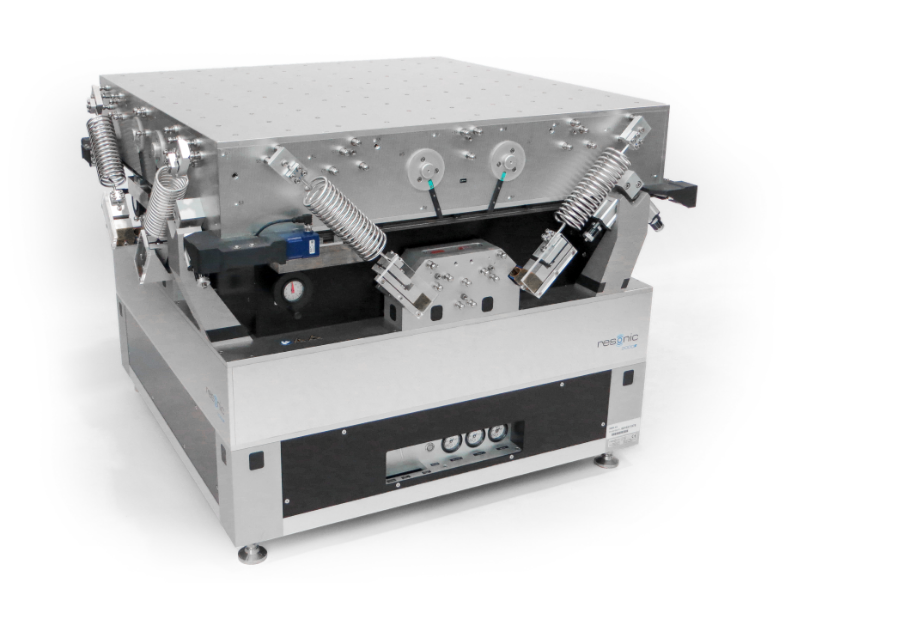

Resonic F is our high-end mass properties measurement solution and also the most versatile system, designed to accurately characterize even the most demanding test objects. Its outstanding measurement range ensures consistent percentage accuracy across vastly different scales. That is combined with a uniquely small package and an efficient, fail-proof process.
Highest accuracy is maintained over a particularly wide measurement range, even for oblong objects where three very different MOIs must be measured simultaneously.
Full MPM results are available within minutes after setup through a simple and fail-proof process. There is no need to reposition the test object multiple times.
Since the full mass properties are determined from a single upright test object position and very gentle movements, even the most demanding test objects can be measured (satellites, helicopters, etc.).
Resonic-F machines are designed for easy transport and storage. They do not require any structural modifications and can be set up directly on the floor. No need to permanently occupy costly test space.
Since the platform plane is the highest point of the machine, there are no limits to the test object’s dimensions.
Due to the horizontal platform, low amplitudes, and minor accelerations, measurements are very safe and there is no need for strong, bolted fixtures.
Satellites (of all sizes), drones and multi-copters, antennas, instruments, sounding rockets, reentry vehicles. No need for a permanent installation in an expensive clean-room space.
A full passenger car and its body in white, engine, gear unit, seats, and dashboard are measured by a single machine. Likewise, truck cabins, truck engines, and truck chassis are measured by a single machine.
Resonic F is regularly used for on-site measurement services for F1 cars, and to perform high-speed configuration measurements (with or without wheels, a driver, etc.).
A full bike and its sprung mass, wheels, steering parts, rear arm, and engine are measured by a single machine. Measurements with dummy riders are possible.
Ship models, offshore platform models, real-sized boats and inspection submarines, jet skis, outboard engines, and drill bits for oil and gas exploration.
Ship engines, construction machinery, earth-moving equipment, tracked vehicles, railway bogies, etc.